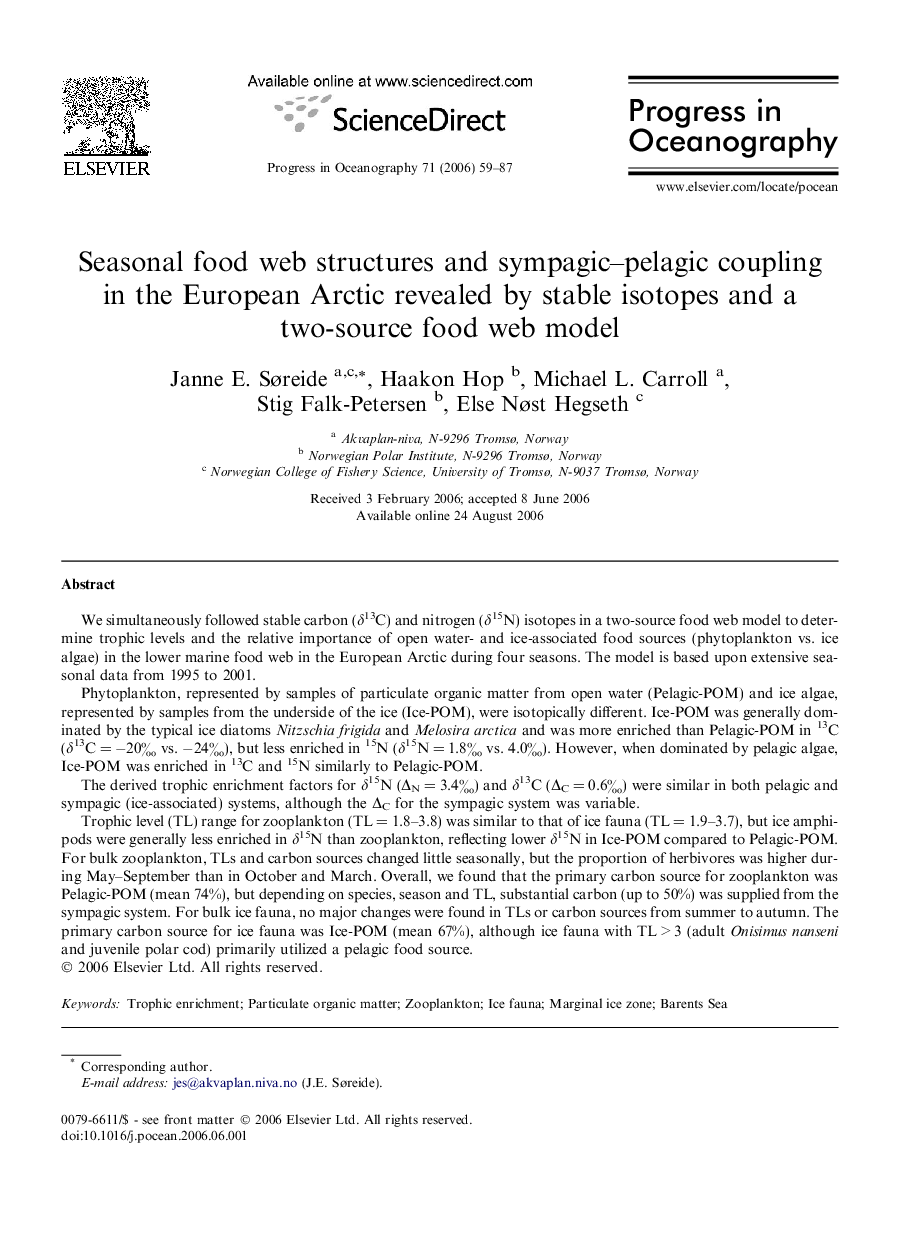| کد مقاله | کد نشریه | سال انتشار | مقاله انگلیسی | نسخه تمام متن |
|---|---|---|---|---|
| 4553873 | 1328938 | 2006 | 29 صفحه PDF | دانلود رایگان |

We simultaneously followed stable carbon (δ13C) and nitrogen (δ15N) isotopes in a two-source food web model to determine trophic levels and the relative importance of open water- and ice-associated food sources (phytoplankton vs. ice algae) in the lower marine food web in the European Arctic during four seasons. The model is based upon extensive seasonal data from 1995 to 2001.Phytoplankton, represented by samples of particulate organic matter from open water (Pelagic-POM) and ice algae, represented by samples from the underside of the ice (Ice-POM), were isotopically different. Ice-POM was generally dominated by the typical ice diatoms Nitzschia frigida and Melosira arctica and was more enriched than Pelagic-POM in 13C (δ13C = −20‰ vs. −24‰), but less enriched in 15N (δ15N = 1.8‰ vs. 4.0‰). However, when dominated by pelagic algae, Ice-POM was enriched in 13C and 15N similarly to Pelagic-POM.The derived trophic enrichment factors for δ15N (ΔN = 3.4‰) and δ13C (ΔC = 0.6‰) were similar in both pelagic and sympagic (ice-associated) systems, although the ΔC for the sympagic system was variable.Trophic level (TL) range for zooplankton (TL = 1.8–3.8) was similar to that of ice fauna (TL = 1.9–3.7), but ice amphipods were generally less enriched in δ15N than zooplankton, reflecting lower δ15N in Ice-POM compared to Pelagic-POM. For bulk zooplankton, TLs and carbon sources changed little seasonally, but the proportion of herbivores was higher during May–September than in October and March. Overall, we found that the primary carbon source for zooplankton was Pelagic-POM (mean 74%), but depending on species, season and TL, substantial carbon (up to 50%) was supplied from the sympagic system. For bulk ice fauna, no major changes were found in TLs or carbon sources from summer to autumn. The primary carbon source for ice fauna was Ice-POM (mean 67%), although ice fauna with TL > 3 (adult Onisimus nanseni and juvenile polar cod) primarily utilized a pelagic food source.
Journal: Progress in Oceanography - Volume 71, Issue 1, October 2006, Pages 59–87